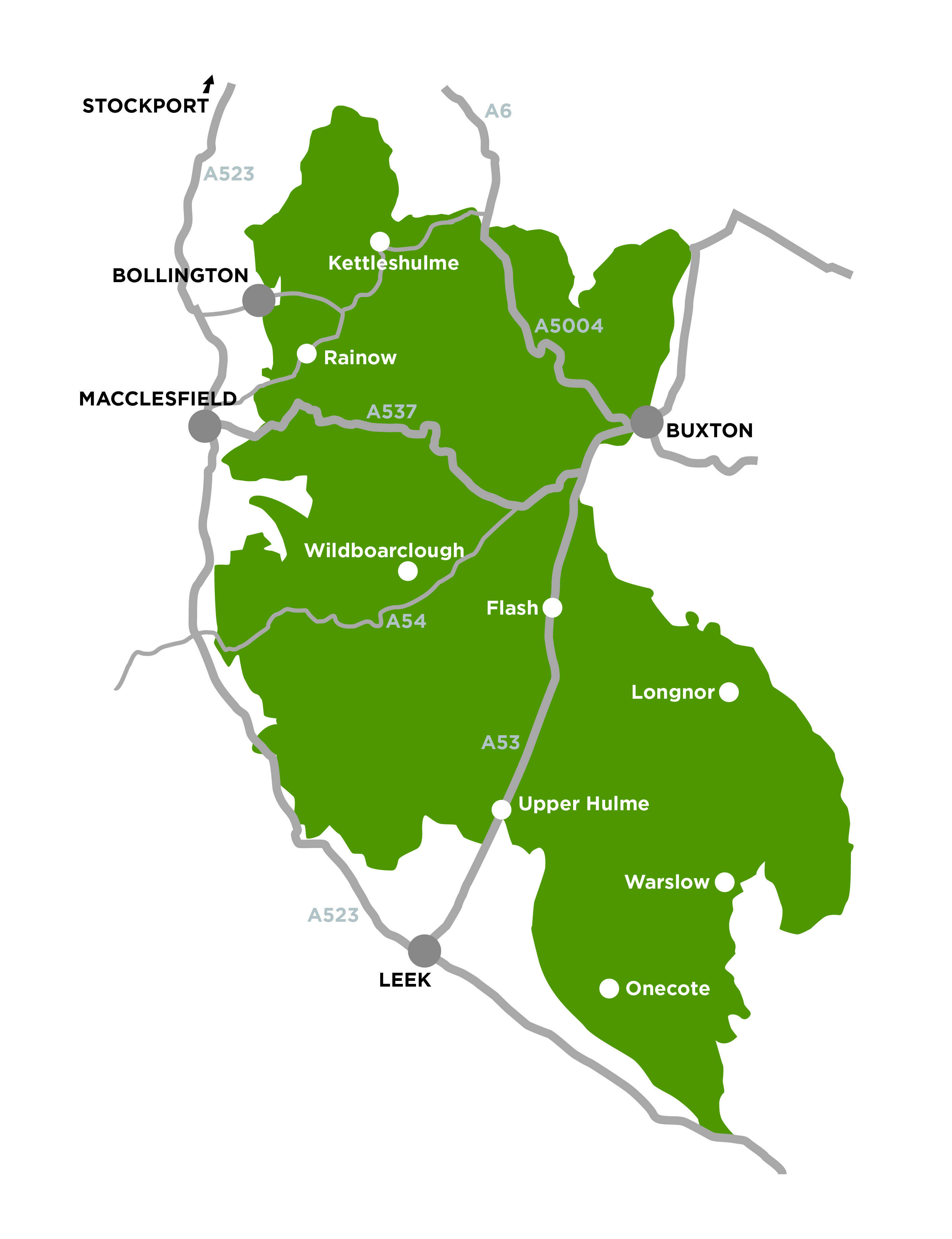This is an archived website, available until June 2027. We hope it will inspire people to continue to care for and protect the South West Peak area and other landscapes. Although the South West Peak Landscape Partnership ended in June 2022, the area is within the Peak District National Park. Enquiries can be made to customer.service@peakdistrict.gov.uk
The 5-year South West Peak Landscape Partnership, 2017-2022, was funded by the National Lottery Heritage Fund.
Special Qualities
Why does the South West Peak area look this way?

The boundary of the South West Peak Landscape Partnership Scheme area is defined by the local Landscape Character Assessment which describes the physical, ecological and human influences and the sense of place. Extensive fieldwork and consultation during 2007 described the landscape and divided it into nine distinct Landscape Character Types: open moors, moorland hills and ridges, enclosed gritstone upland, densely enclosed gritstone upland, slopes and valleys with woodland, upland pastures, upper valley pastures, reservoir valleys with woodland and riverside meadows.
This gives us a sinuous boundary which follows the underlying geology and the components of the landscape, ignoring administrative boundaries. The only exception to this is where the Churnet Valley Living Landscape Partnership boundary meets the National Park boundary, cutting into the South West Peak at the southern end.
During our development phase we looked at options for changing or reducing the size of the area (354 km²), including using water catchment boundaries or administrative boundaries; however, we felt that this gave us a very artificial division of the landscape and would have excluded key areas for breeding waders and for species-rich grasslands in particular.
Why is the South West Peak so special?
The South West Peak is a timeless small-scale old-fashioned mosaic. This is the hidden gem of the Peak District, a land of peace and quiet unspoilt by tourism. Here is a crossroads where the uplands join the lowlands at spectacular gritstone rock edges. This is a traditional landscape created by generations of farming; slightly derelict and a bit forgotten but with close supportive communities and a fierce spirit.
This is character-building land of brutal tranquillity, harsh beauty and wild wet windswept untamed isolation. Winters are challenging and the living is fragile. This land is complex, threatened, marginal, isolated, undervalued, fragmented, remote and loved. Here packhorse meets peregrine; curlew and peewit are found amid a patchwork of diverse flowery pastures and meadows; cotton-grass, heather and bilberry clothe the rugged moorland.
Traditional stone barns offer memories of idyllic childhood, while hidden industrial heritage is often overlooked. This is an accessible place for family adventure, for reflection and relaxation.
The landscape is enchanting and mythical, alive with ancient legends to stimulate the imagination. People are passionate, inspired by breath-taking views and the freedom of the hills.
This is a place of peaceful picnics and exhilarating climbing, an escape to nature and a path to wellbeing.

